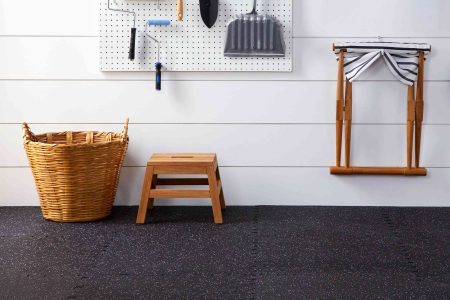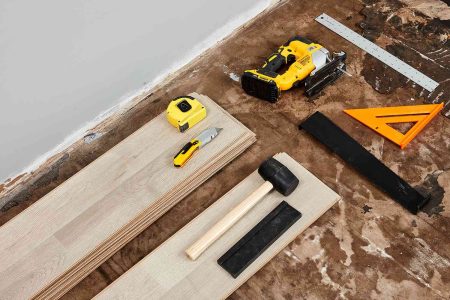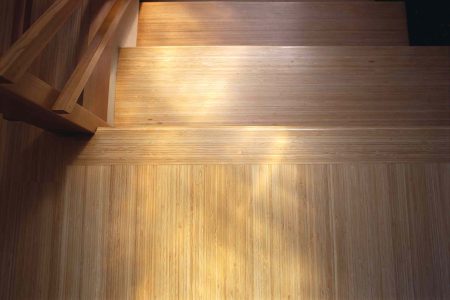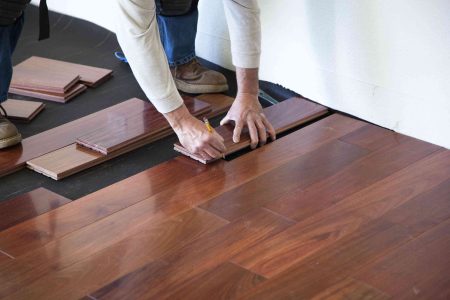Oil stains spoil the appearance of concrete driveways and garage floors. Plus, oil spills can be a slip hazard. If you don’t manage to remove the oil stains quickly, they only become more embedded and difficult to remove.
With a few simple supplies, you can remove fresh or even older hardened oil stains from concrete.
Before You Begin
The best way to remove oil stains from concrete is to first break up the oil with a solvent-based solution. After the stain has been loosened, follow up by soaking up the mixture with a granular absorbent.
Solvents
Use a solvent that contains kerosene, white spirits, emulsifiers, and halogenated hydrocarbons. These are found in auto supply stores, home centers, and hardware stores.
- Engine degreaser
- Brake cleaner
- Starting fluid
- Household adhesive remover
Absorbents
Basic cat litter or granular automotive oil absorbent are both acceptable for soaking up oil stains. Both are essentially the same product: clay granules.
On a pound-per-pound basis, automotive oil absorbent is less expensive than cat litter.
If using cat litter, pick a plain, unscented product with no special additives. It cannot be paper, corn, coconut, wood, gel, or any other alternative cat litter. It must be a traditional clay-based cat litter.
When to Clean Oil Stains From Concrete
Clean oil stains from concrete right after they occur. The longer you wait, the deeper the oil will soak into the porous surface. Over time, liquefied oil hardens and becomes more difficult to remove.
Safety Considerations
Wear full safety gear when spraying the solvent on the oil. Goggles will protect your eyes from backsplash. Waterproof gloves, long sleeves, and pants will protect your body from caustic and hazardous fluids.
Always absorb the solvent and oil and dispose of it in a community-approved manner. Do not wash it into storm drains, gutters, flowerbeds, bushes, or grass.
What You’ll Need
Equipment / Tools
- Nylon brush
- Old broom
- Dustpan
- Old towels
- Safety goggles
- Latex gloves
- Breathing protection
Materials
- Solvent
- Absorbent
Instructions
-
Soak the Oil Puddle With the Absorbent
When the oil stain is fresh, still wet, and standing on the surface, first soak up the majority of it with an absorbent like cat litter or old cotton towels.
Apply about a 1/4-inch of cat litter across the entire oil puddle or lay the towels on top.
-
Remove the Absorbent
After about 5 minutes, remove the cat litter or towels. Sweep the cat litter into a dustpan or lift the towels straight up off of the oil stain. Be careful not to spread the oil further than the perimeter of the stain.
-
Add the Absorbent
Apply a thick layer of the granular absorbent to the oil stain. After about 10 minutes, sweep up the absorbent with the broom and dustpan.
-
Add the Solvent
Wearing full protective gear, liberally spray the solvent onto the oil stain. The entire stain must be dampened with the fluid.
-
Scrub the Solvent
Wearing latex or rubber gloves, use the nylon brush to scrub the solvent into the oil stain.
-
Add the Absorbent
Quickly add the absorbent before the solvent dries up. Apply a generous amount of absorbent, covering the entire stain. Let the absorbent sit for about 20 minutes.
-
Sweep Up the Absorbent
Sweep the absorbent into the dustpan. Even after the granules have been picked up, be sure to sweep up the remaining dust, as that also contains absorbed oil.
-
Repeat Until Clean
Repeat the cycle of degreasing, scrubbing, and absorbing one or two more times until the oil stain is fully gone.
Alternate Method of Removing Oil Stains From Concrete
If the stain is fairly fresh and you would like to avoid using petroleum products, liquid dishwashing detergent can sometimes remove oil stains.
Apply a thick layer of detergent to the concrete until it becomes a paste. Scrub it in with the nylon brush. Let it dry for several hours. Wash off with water.
Troubleshooting Tough, Embedded Oil Stains in Concrete
Stubborn oil stains may require more aggressive methods:
- Aid the absorbent: Adding pressure to the granular absorbent can help it soak up embedded oil stains. Wearing old shoes or boots, grind the absorbent into the concrete by scuffing it with your foot.
- Pressure washer: Follow up the solvent/absorbent method by cleaning the concrete with a pressure washer.
- Weed torcher: Apply flame to the oil stains with a weed torcher to burn off embedded oil stains. The method is effective but slow as the flame needs to be held on the oil stain for a long time.
- Muriatic acid: Muriatic acid is a form of hydrochloric acid used for etching concrete. As muriatic acid etches concrete, it can also etch away oil stains in the process. Muriatic acid is extremely caustic and hazardous to work with.
- Staining: If stains have proven too difficult to remove, staining the concrete a different color can be a viable alternative.
Warning
Using a pressure washer can mechanically abrade the concrete, damaging it. Muriatic acid chemically abrades the concrete. Use carefully and be sure to wear full protective gear.
When to Call a Professional
Pressure washing deeply embedded oil stains without damaging the concrete is difficult if you’re not experienced. For this part, you may want to call a professional pressuring washing company.
Read the full article here









